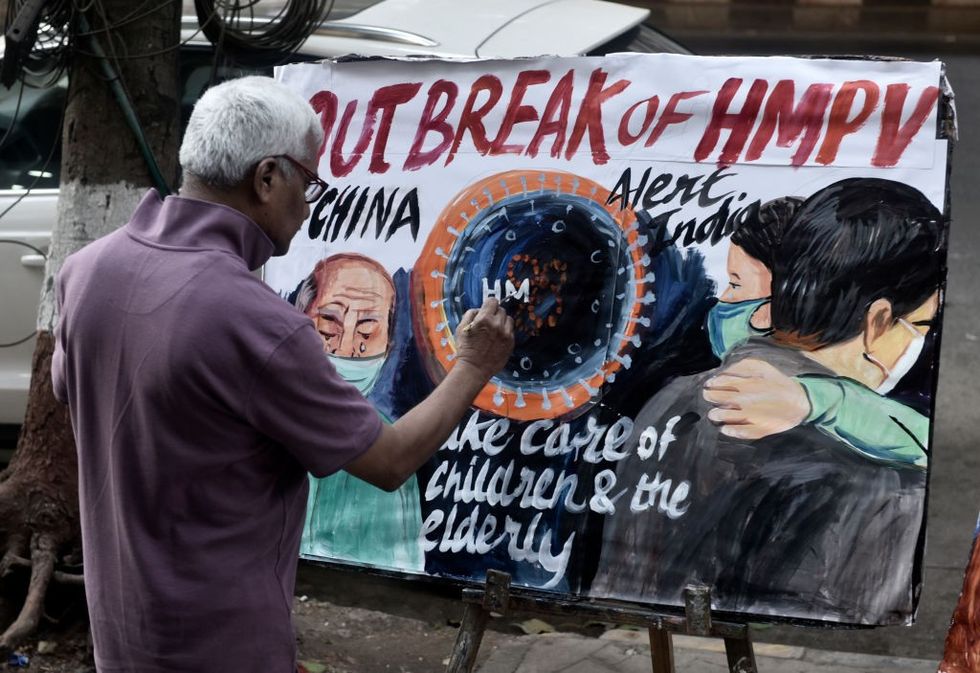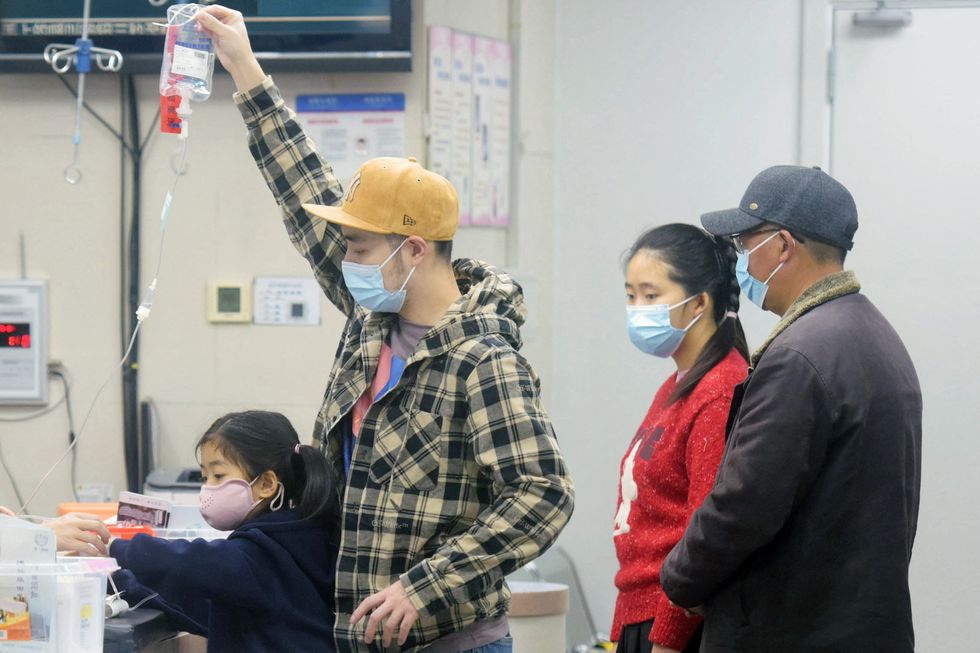HPMV cases DOUBLE in Britain with experts urging China to disclose vital information on outbreak
Cases of human metapneumovirus (HMPV) have doubled in Britain over the past month, as leading virus experts urge Chinese authorities to share crucial information about their outbreak.
Latest UK surveillance data shows that as many as one in 20 respiratory infections could now be attributed to HMPV, with cases rising particularly sharply among children under five.
The surge comes as Chinese hospitals report being overwhelmed with HMPV patients, primarily affecting children, with social media showing packed waiting rooms.
Chief Scientific Officer at infectious disease testing firm hVIVO Dr Andrew Catchpole said UK authorities need more details about the specific strain circulating in China to properly assess potential risks to the British public.

Beijing has downplayed the situation, claiming respiratory infections are “less severe” and “smaller in scale” compared to last year. According to the UK Health Security Agency, one in 10 children tested for respiratory infections in hospital were positive for HMPV as of December 23.
This represents more than double the proportion of very young children testing positive compared to late November. The under-fives are considered ‘superspreaders’ due to their habits of putting unclean hands in their mouths and touching their eyes or nose, experts say.
Children are particularly vulnerable to HMPV as their immune systems are still developing, with their small airways increasing the risk of complications.
The virus can lurk in the body for days before symptoms appear, meaning people can unknowingly spread it while appearing well.
LATEST DEVELOPMENTS
- ‘Fun-loving’ British medic who volunteered for Ukraine killed in skirmish with Putin’s army
- NHS hospital declares critical incident over ‘exceptionally high’ flu cases
- Leicestershire residents told to ‘act now’ as ‘danger to life’ flood warning issued

Overall HMPV positivity in the UK has increased to 4.5 per cent, with the highest rates seen in those under five years at 10 per cent.
“HMPV is usually detected in the winter periods but it does seem that the rates of serious infection may be higher in China than what we would expect in a normal year,” said Dr Catchpole.
“We need more information on the specific strain that is circulating to start to understand if this is the usual circulating strains or if the virus causing high infection rates in China has some differences”, he added.
Dr Catchpole noted that while HMPV does mutate over time, it is “not a virus considered to have pandemic potential.”
Dr Sanjaya Senanayake from the Australian National University said it was ‘vital for China to share its data on this outbreak in a timely manner’.
‘We will need genomic data confirming that HMPV is the culprit, and that there aren’t any significant mutations of concern’, Dr Senanayake stressed.
HMPV typically causes cold-like symptoms including fever, cough, congestion and shortness of breath, with most cases resolving within five days. However, more severe symptoms such as bronchitis, bronchiolitis and pneumonia can occur, particularly in vulnerable groups.
Professor Jaya Dantas from Curtin University warned: “In young children, the elderly and those who are immune compromised, HMPV can lead to severe cases and may lead to pneumonia'”
Experts recommend getting tested, staying home when ill, and wearing masks in public spaces to protect vulnerable individuals.

